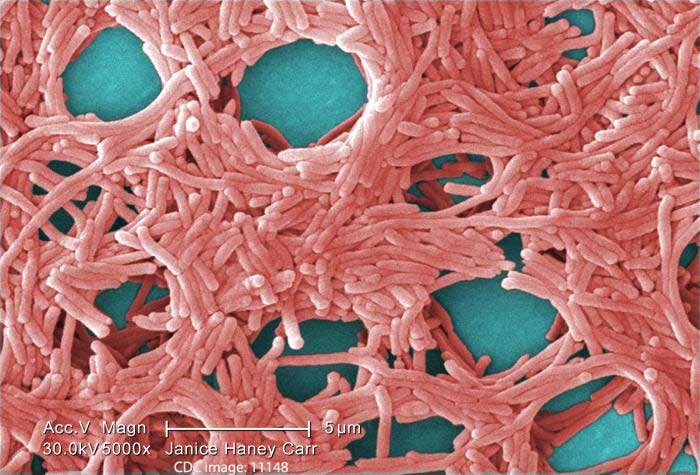The Minnesota Department of Health is scrambling to pinpoint the source of a serious outbreak of Legionnaires’ disease that has sickened 17 people who had been living, visiting, or working in Hopkins, Minnesota since August 4th. One of these victims has now died. The person who died was elderly and was one of the previously confirmed patients.
Doug Schultz of the Minnesota Department of Health confirmed those numbers. All of the cases were exposed before or during the first full week of September 2016, before the outbreak was identified.

The victims, all exposed to the potentially fatal Legionella pneumonia bacteria in the Hopkins vicinity, range in age from their 20s to their 90s; most are elderly or have chronic health conditions. Legionella bacteria are commonly found in the environment, and seldom pose a threat to young, healthy people. However, these bacteria can be life-threatening to people who are older than 50, smokers, have compromised immune systems, or have underlying illnesses such as COPD, other respiratory illness, diabetes, cancer, heart disease, kidney disease, or HIV.
Attorney Eric Hageman said, “the victims of this outbreak deserve answers and they deserve accountability. Legionnaires’ disease is a deadly illness, especially for those in high risk groups.”
The first Hopkins case of Legionnaires’ disease was diagnosed on April 4th. When two or more cases of Legionnaires’ disease present in the same area within the same timeframe, this is considered to be an outbreak and public health officials – in this case, the Minnesota Department of Health and Hennepin County Public Health officials, are called in to help investigate.
When a Legionnaires’ disease outbreak occurs in the community (as opposed to within a specific healthcare facility, where outbreaks typically happen), sources often include poorly maintained, complex water systems such as cooling towers, plumbing systems, grocery store misters, or decorative fountains. The disease is spread through aerosolized water vapor, which people either inhale or – less rarely – aspirate while drinking from potable water sources.
Although a common source for the Hopkins outbreak has not been identified to date, Minnesota Health Department officials are investigating possible sources including the Thermotech plastic injection facility, the Supervalu warehouse, and a decorative fountain owned by Cargill. These locations – only three of the potential sources under investigation – are all located near the intersection of Highway 169 and Excelsior Boulevard. Each of the people who have contracted Legionnaires’ disease thus far have lived or worked within a 2-mile radius of this intersection.
The average death rate for community-acquired Legionnaires’ disease cases is 10%. As Minnesota’s Star Tribune reports, the death this week of the Hopkins’ outbreak’s first fatality – an elderly individual – was not unanticipated: “’While it’s unfortunate to see a death, we are not surprised that one has occurred in an outbreak of this size,” the Minnesota Health Department said Wednesday in a prepared statement.
There are typically 50 to 60 cases of legionellosis reported in Minnesota each year. However, this year the state has already seen more than 60 cases, which reflects a nationwide increase in the number of annual occurrences. Because a) a common source of the Hopkins outbreak has not yet been identified and b) the incubation period of Legionnaires’ disease ranges from 2 to 10 days, state health officials warn that additional cases may arise. Last year, over the course of two community outbreaks in Bronx, New York, over 128 people contracted Legionnaires’ disease and a dozen died.
Symptoms of Legionnaires’ disease include shortness of breath, coughing, fatigue, chills, muscle aches, and confusion / hallucinations. These symptoms often develop into a high fever (102–105°F) and pneumonia. It is critical that people experiencing these symptoms seek medical attention, since Legionnaires’ disease only responds to certain drug therapies. More information about Legionnaires’ disease can be accessed at the Center for Disease Control (CDC)’s here on the CDC’s website.





It’s not a good feeling living only two blocks from this area..
I can understand that!